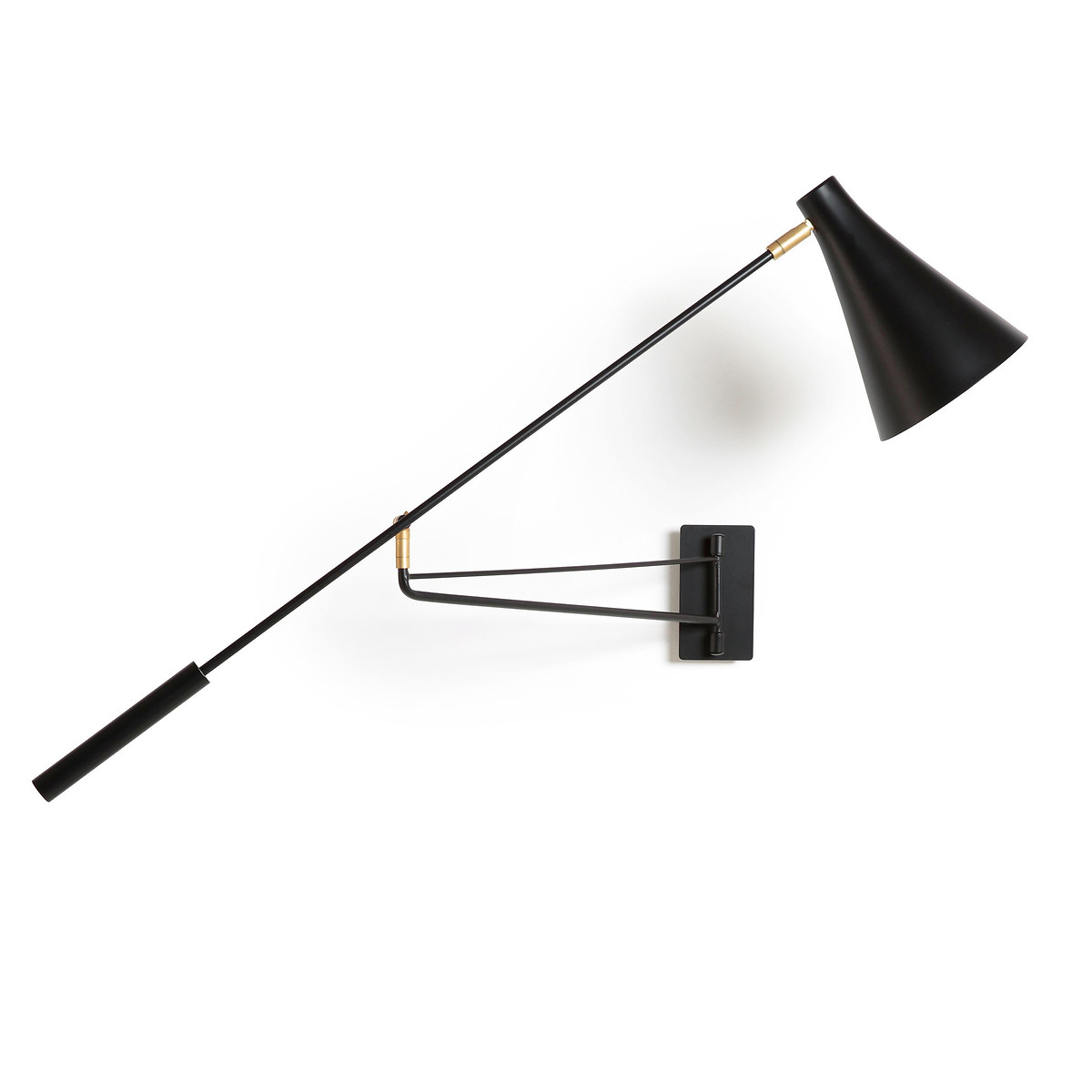10 Mid-Century Modern Lighting Ideas That Bring Design History to Your Room, But Still Feel Right for Today
Interior designers love to reference this classic era — here’s how to shed new light on the look
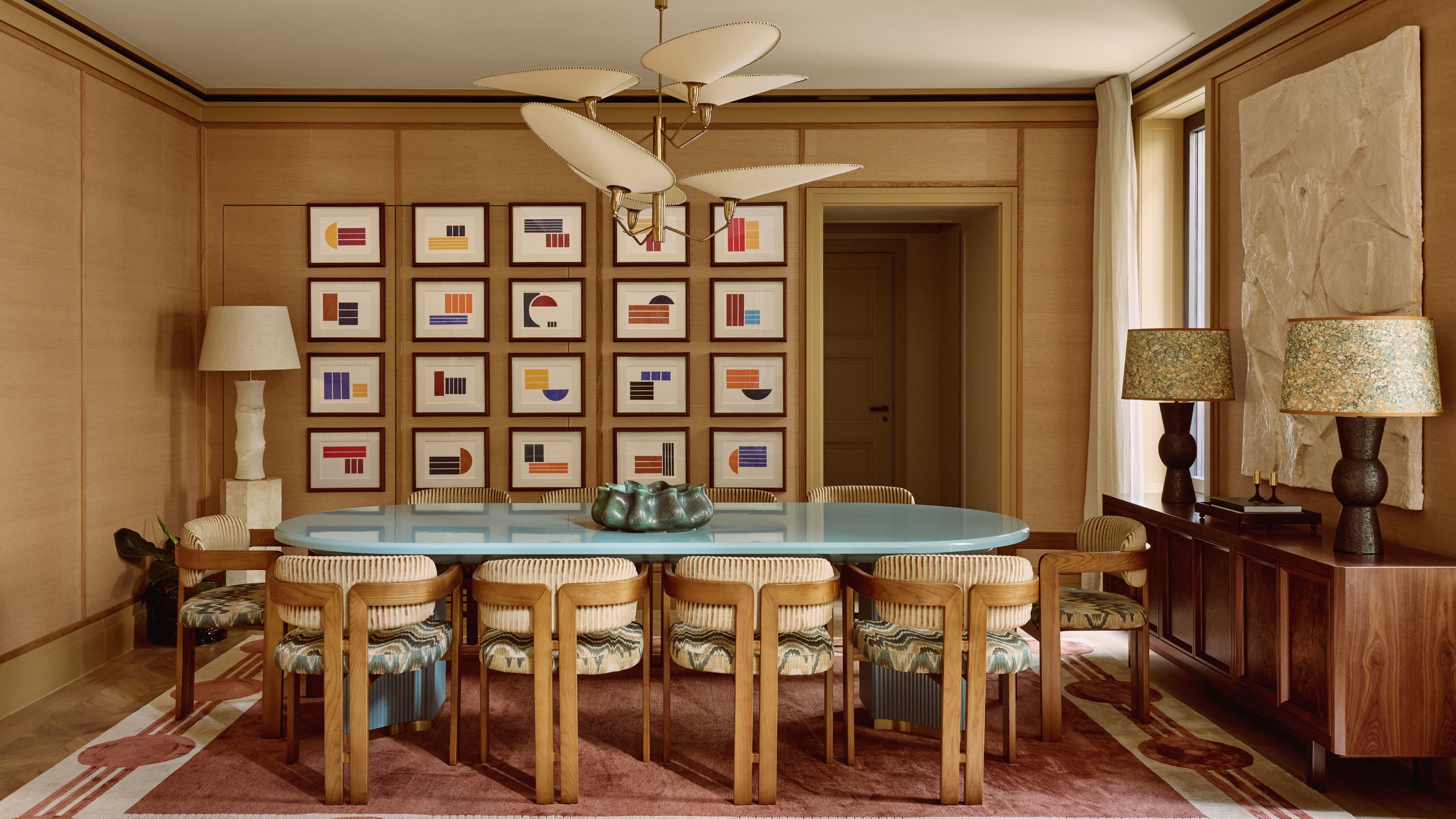

Interior designers are once again embracing mid-century modern lighting ideas to give rooms a retro edge that looks and feels contemporary. “Creating a dialogue between past and present elevates a space with character and personality,” says London-based designer Rebecca Hughes. “It’s all about timeless sophistication.”
The mid-century modern home aesthetic — think sculptural silhouettes in a mix of materials — is a natural and stylish fit for lighting. Fixtures from, and influenced by, the era can anchor a room (the sweeping Arco floor lamp, for one, is a favorite for wow-factor) or provide a playful flourish (think colorful Space Age chandeliers).
Whether you’re looking for a new desk lamp to complete your home office or a statement piece to steal the spotlight in your living room, why not take inspiration from one of the most enduring eras of design? Here are ten mid-century modern lighting ideas that will seriously switch on the inspiration.
1. Climb the Walls
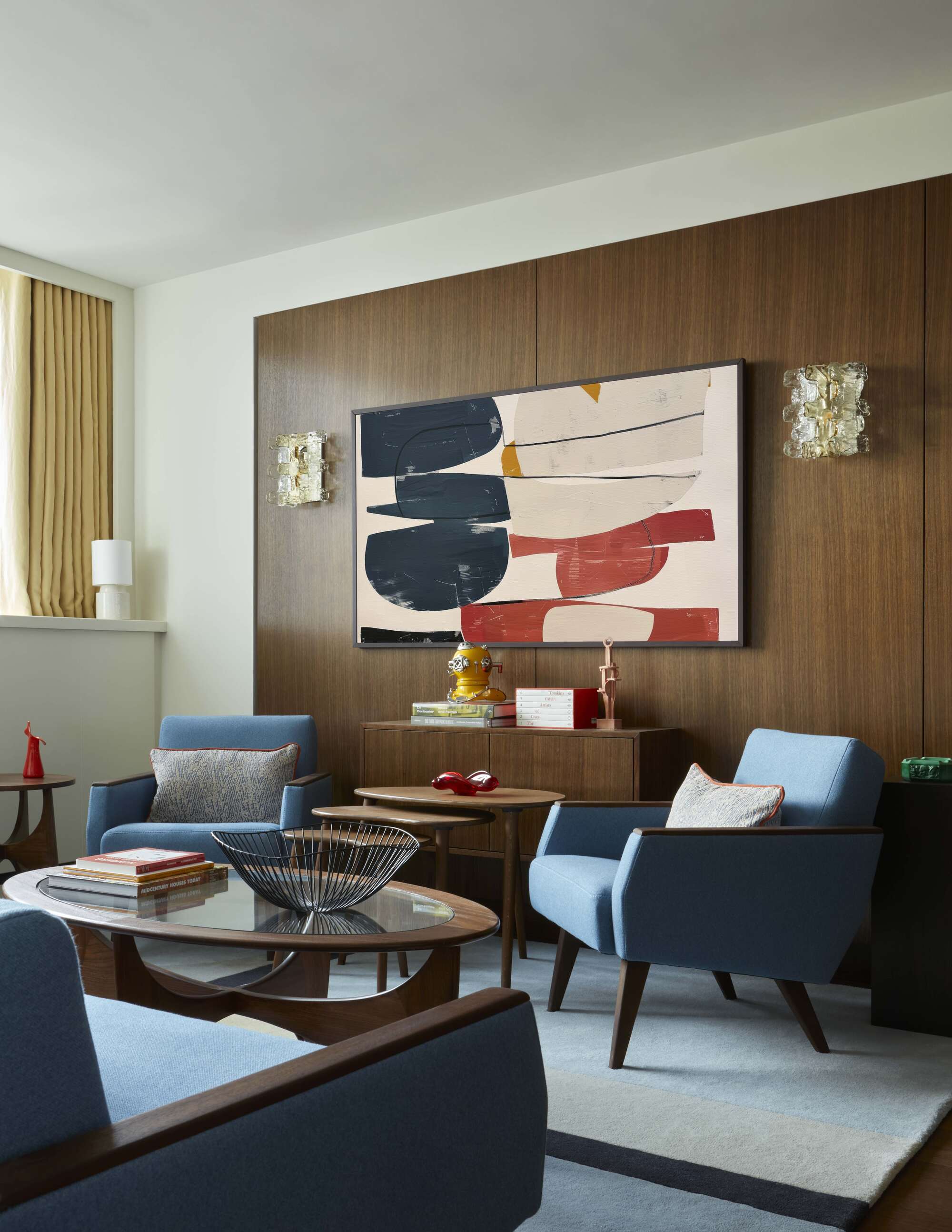
In this space, vintage Italian wall lights have been used to create contrast against iconic mid-century modern panelling.
“Lighting is what I refer to as the dark arts,” explains Jacu Strauss, Lore Group’s design and creative director. He created this mid-century modern living space for Sea Containers Hotel in collaboration with Vinterior.
Paneled walls are a characteristic design feature of the mid-century modern style , with wood forming an eye-catching backdrop for light fittings. “We wanted to add even more texture here, so we sourced Italian Murano glass sconces to add a touch of sparkle against the walnut,” says Jacu.
“A central pendant would have been distracting in this space, and I believe that wall lights are so much more than just functional,” says Jacu. “They can become integral to the overall design language of a space, all the while casting a warm, inviting glow.”
2. Play With Color
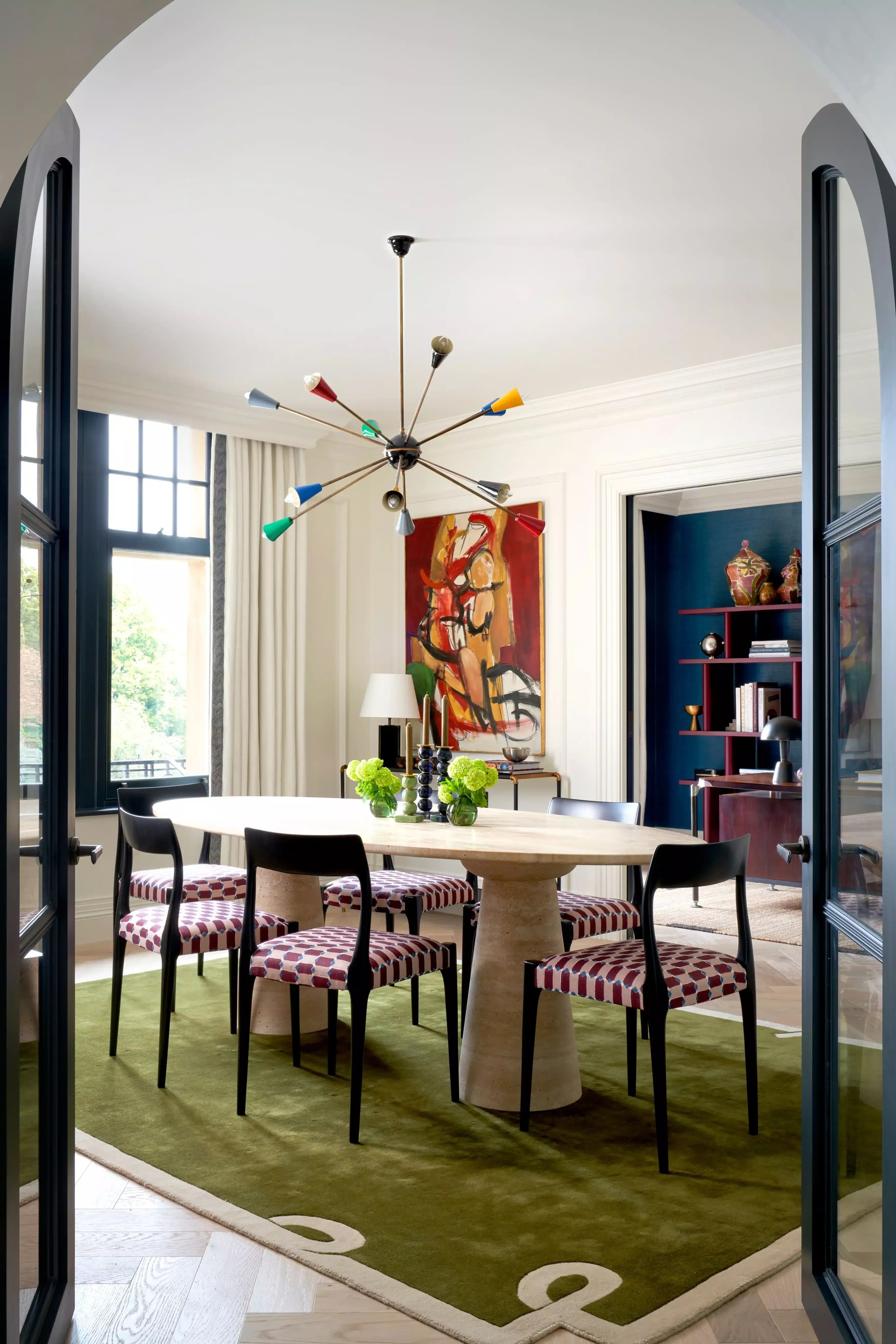
The colorful light fitting adds a sense of fun to this London dining room.
Sputnik-style chandeliers burst into popularity after the first-ever satellite was launched in October 1957. They are often seen in brass or chrome, but for a statement take on the look, why not opt for a colorful version?
The Livingetc newsletters are your inside source for what’s shaping interiors now - and what’s next. Discover trend forecasts, smart style ideas, and curated shopping inspiration that brings design to life. Subscribe today and stay ahead of the curve.
“We view dining rooms as theatrical moments within the home, so we set them as a stage,” explains Romanos Brihi, co-founder of Studio Vero and creator of this richly-layered space. “There’s a bold confidence in using colorful pieces, especially ones that give spaces a sense of history.”
From artwork to flooring, the colors of the chandelier are reflected throughout the colorful dining space. “A statement palette commands attention and creates rooms with personality that still feel like home,” says Romanos.
3. Create a Balance
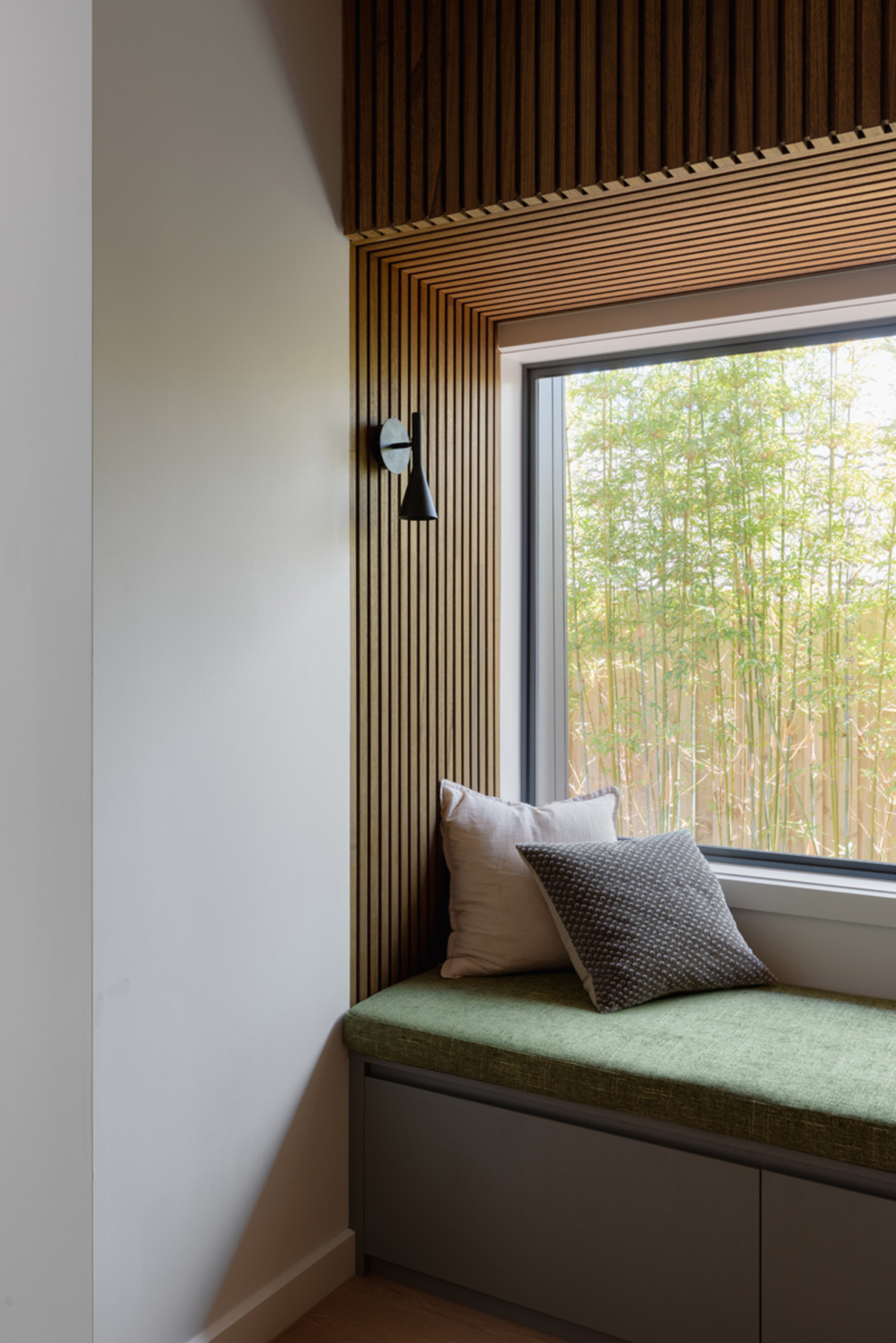
Mid-century modern lighting ideas can be executed in a simple way, rather than just a show-stopping one.
If you want to create a more gentle look in your space, mid-century modern lighting can help to set a calm tone. “This nook was designed as a quiet moment, so lighting was a key consideration here,” explains designer Jessica Viscarde from Eclectic Creative.
“The black downlight has a clean silhouette, mirroring the architectural lines of the nook’s timber cladding and reinforcing the mid-century reference without feeling too literal,” she says.
“Lighting can add depth, dimension, and feeling, and it turns this simple seating area into a place you want to spend time in," she adds. "The best pieces aren’t always the boldest; they’re the ones that quietly balance the surrounding materials and mood. It’s about thoughtful contrast.”
Jessica Viscarde describes her work as crafting spaces that enhance her clients’ daily lives, reflect their stories, and, most importantly, stand the test of time. She is known for restoring period properties with a contemporary sensibility.
4. Consider Integration
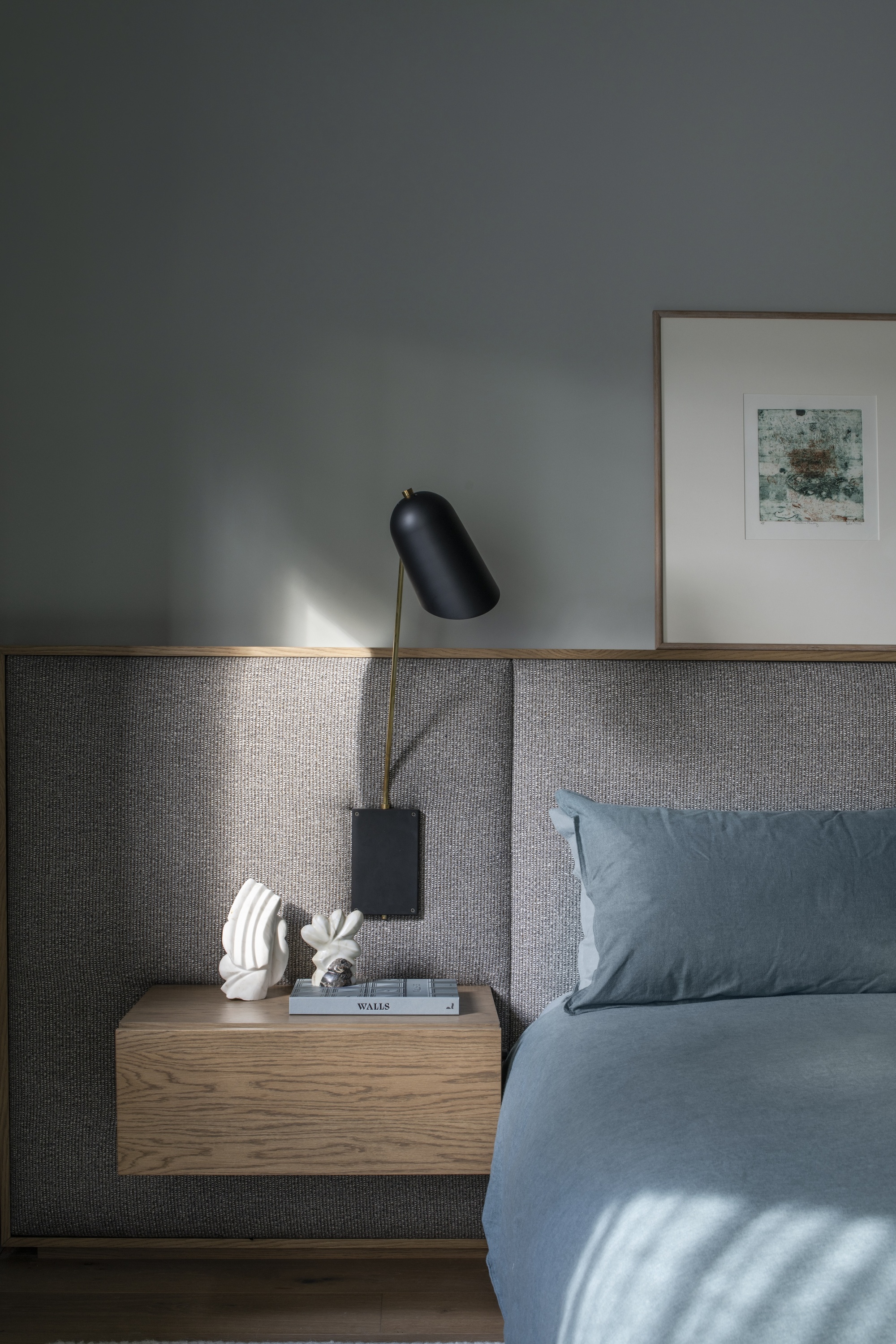
The design of this Melbourne bedroom features a contemporary interpretation of built-in features synonymous with the mid-century era.
A key feature of mid-century modern design is bedroom built-ins or integrated elements, chosen then as now to save surface area and artfully blend function with form. “This bedroom calls for elegance and restraint,” explains designer Simone Haag. “The integrated lighting is a subtle touch, with just enough detail to catch your eye but not so much that it interrupts the softness of the space.”
“We nodded to mid-century modern design sensibilities with the black and brass combination, but in a way that feels incredibly current," she adds. "This light fitting is more sculptural than it is nostalgic.”
If you’re considering a similar look but don’t want to replace your headboard, try mounting clamp-style fittings or installing swing-arm wall lights on either side of the bed.
5. Layer Lighting

Multiple light fixtures can create an ambient effect: consider installing smart or dimmable bulbs to soften the impact of multiple sources.
Dining room lighting can create a sense of warmth, and this space (part of the 60 Curzon development and designed by De Rosee Sa) is a case in point. “Lighting should never be purely functional; it should elevate mood, enhance materials, and choreograph how a space is experienced,” the firm’s co-founder Claire Sá explains.
To achieve a similar effect, consider the positioning of your mid-century modern lighting ideas — think about the height of wall lights and side lamps as well as the ‘drop’ from pendants and the angle of floor lamps. “To build depth here, we layered lighting across different planes,” Claire says.
“The Bolzano table lamps from Vaughan, with their sculptural ceramic form, a nod to mid-century aesthetics, complement the custom Spider chandelier by Diego Cardigan from The FM Gallery’s graphic geometry without competing against it," she adds. "Together, they bring a sense of visual balance.”
6. Take the Floor

An iconic mid-century modern floor lamp becomes the focal point in this Melbourne living room.
One of the most recognizable pieces of mid-century modern lighting design is Achille Castiglioni’s iconic Arco floor lamp. Featuring a heavy marble base and graceful metallic curve, the design casts overhead light on a space without relying solely on ceiling fixtures.
“As is often the case, some of the best elements of a space can also be its constraints,” says Chelsea Hing, who chose the lighting to respond to the complexities of the room.
“The living room is bordered by windows on three sides and overlooks a central courtyard,” she explains. “The iconic Arco works so well here because it’s not constrained in any way by the walls or windows, giving height and volume to the room. The guiding principle here is to pick your hero and commit to it — this is a great example of that.”
As the head of her eponymous Melbourne design studio, Chelsea Hing leads an award-winning team known for creating residential spaces as liveable as they are luxurious, and all imbued with character and personality.
7. Find Your Angle
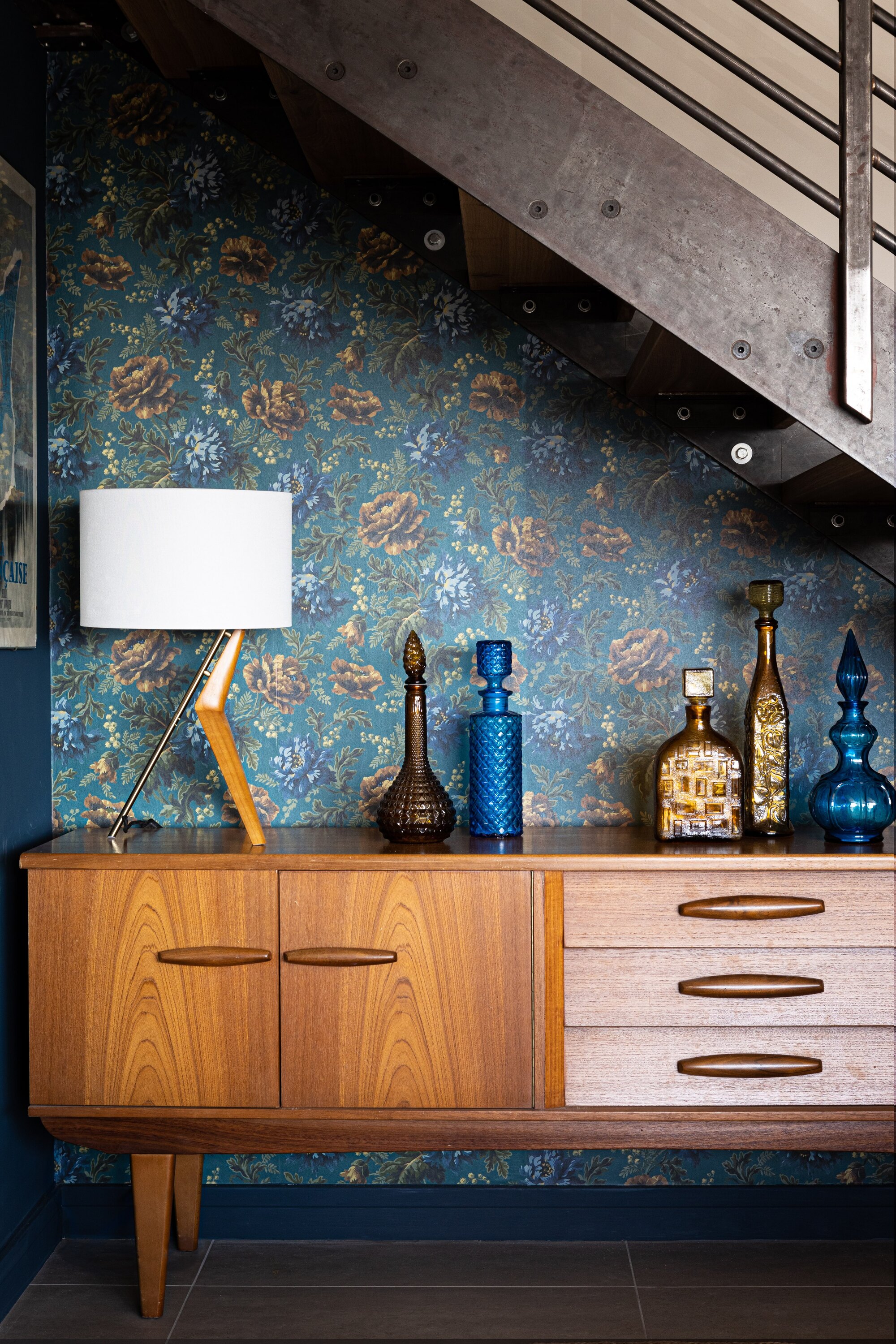
Created for a collector of mid-century pieces, this hallway features lighting chosen to echo the space’s structural features.
The sculptural silhouettes of mid-century modern lighting mean the fixtures can work particularly well in spaces with strong contours or architectural quirks.
“This table lamp feels as much like art as it does a functional piece, with its form mimicking the rigid, angular style of the industrial staircase,” explains Eloise Pfeiffer from Pfeiffer Design. “The fitting itself softens it, though, as the wood clearly nods to the mid-century period’s more organic feel.”
“Using mid-century design in this way can help to make individual pieces feel fresh and liveable in contemporary spaces,” adds Eloise.
8. Get to Work
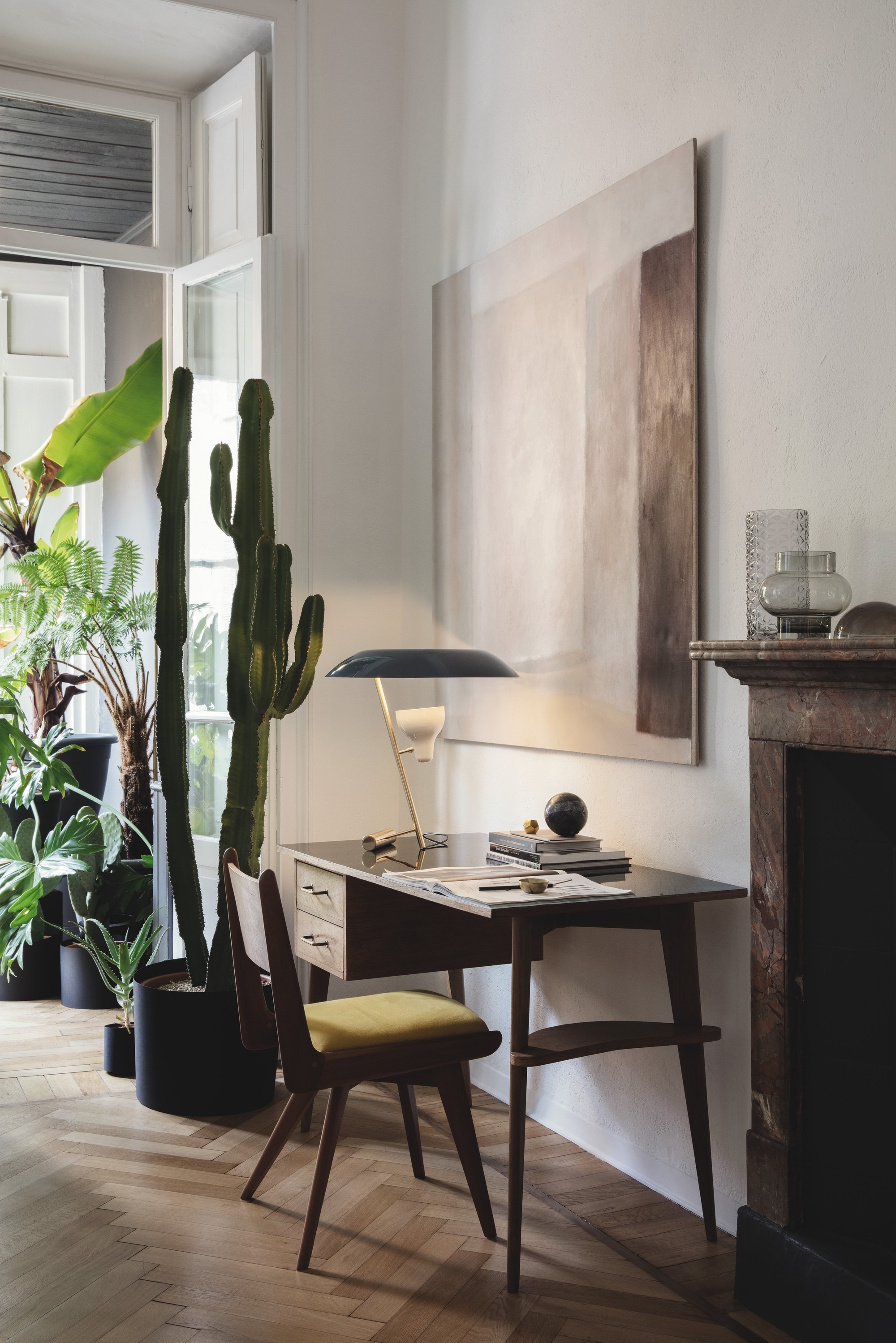
A desk lamp with real character, Gino Sarfatti’s Model 548 is an investment piece that will pay dividends in any home office.
The right home office lighting ideas can transform your working environment, adding design flair while increasing productivity. With the era’s love of practicality as well as aesthetics, mid-century modern lighting can be the perfect choice for your home office.
“Mid-century modern lighting, with its clean lines, organic forms, and warm finishes bring a distinct sense of character to a desk,” echoes interior designer Rebecca Hughes. “Striking light fixtures command attention and ground a home office in style.”
Gino Sarfatti’s eye-catching Model 548 lamp takes pride of place on this desk. Designed in 1951, it features a polished brass base, spotlight shade and reflective diffuser. “Incorporating a treasure like this elevates the design of your space from mere decoration to one with a sense of legacy,” says Rebecca.
9. Look up
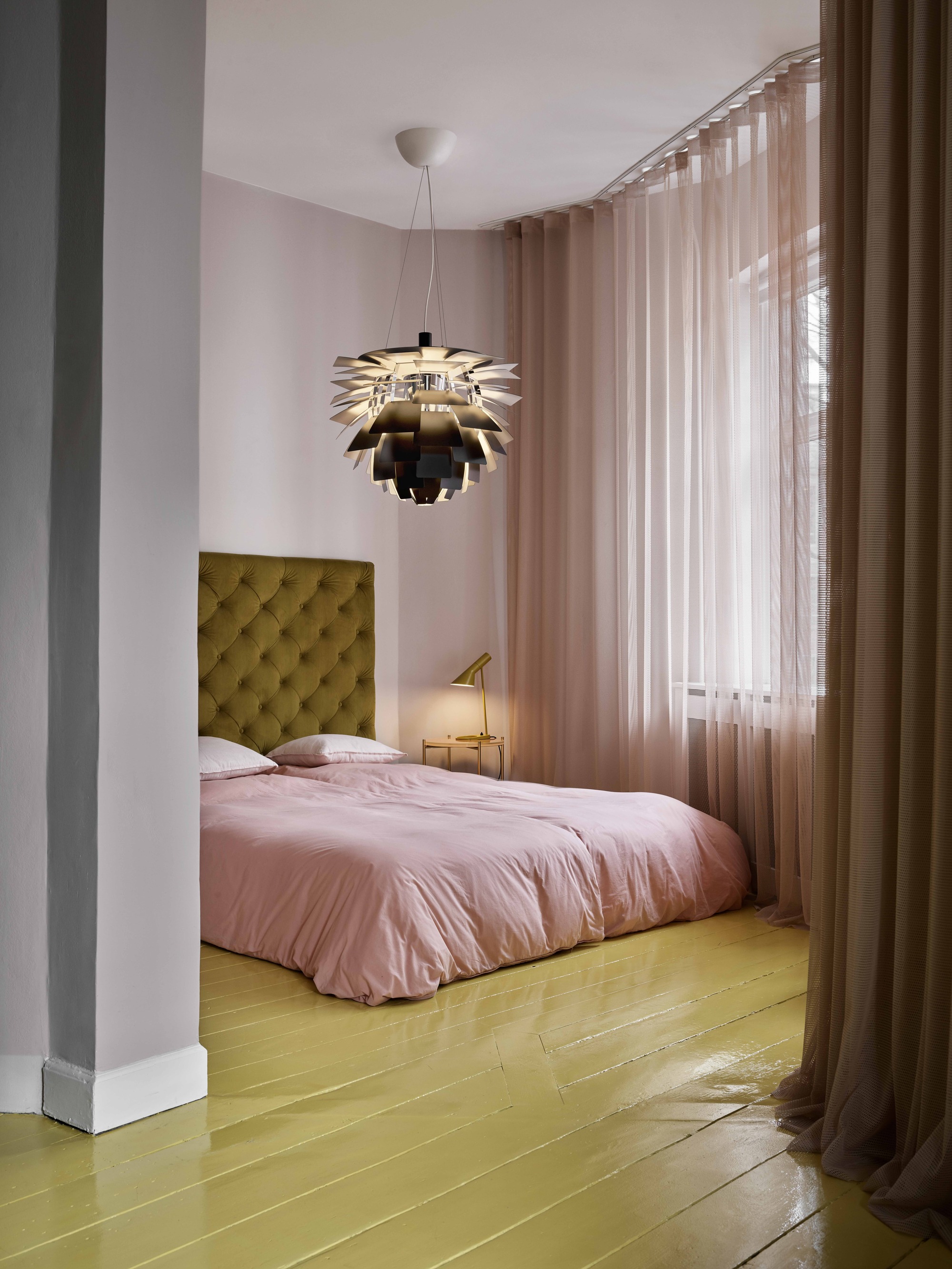
A Louis Poulsen pendant from 1958 is a visual delight from every angle.
“Lighting is a complex design challenge unique to every space,” the team at Shamshiri, a Los Angeles-based interior design studio, explain. “A solid guiding principle is to focus on balance and adaptability.”
When it comes to bedroom lighting ideas, bedside lamps often take center stage, but a statement ceiling light from the mid-century modern era can complement them and become a focal point in its own right. Positioned over a bed, it can provide functional or ambient light while adding visual interest when you’re lying in bed and looking up at the ceiling.
“Of particular note is the Louis Poulsen PH Artichoke pendant, originally designed in 1958, which is appropriate to have as a central focus in a space,” the Shamshiri team tells us.
10. Go Monochrome
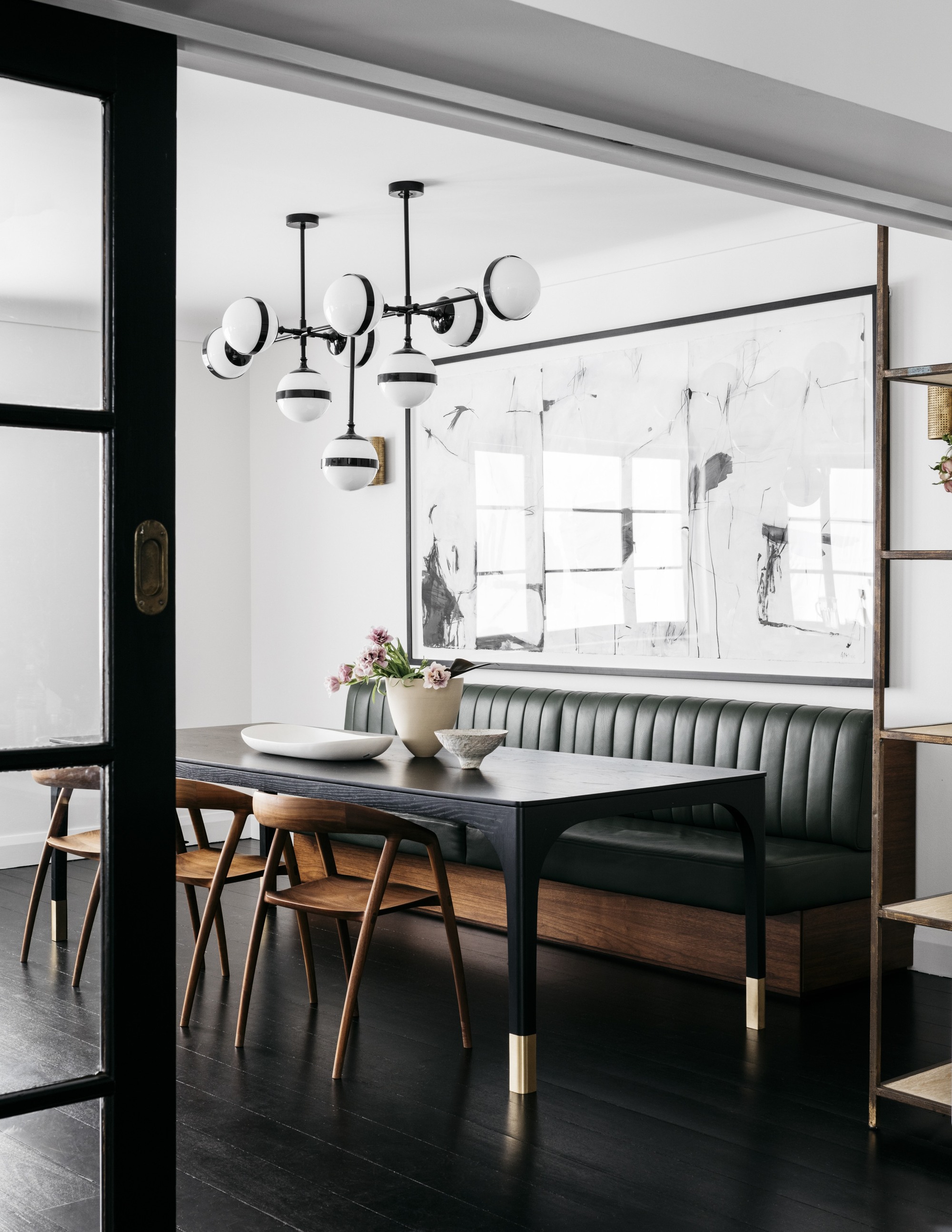
In this dining space, a chandelier inspired by mid-century modern design echoes the considered color palette.
If you decide to stick to a tight color scheme in a space, the choice of light fixtures can play an important role.
“A crisp, monochromatic black and white palette defines this dining area, which also features strong vertical and horizontal planes,” explain its designers Juliette Arent and Sarah-Jane Pyke from the award winning Sydney-based studio Arent&Pyke.
“We chose the Peggy chandelier from Hangar Design Group to add volume and depth,” the pair reveal. “We tonally matched it to the large artwork behind it, preventing the fixture from dominating the space in the way that perhaps a metallic or colorful pendant would. The light’s sculptural quality enlivens that artwork’s abstract black markings in a way that subtly energizes the room.”
FAQs
Are Vintage Mid-Century Lights Worth Investing In?
Owning a fitting that was designed and produced in the mid-century modern era can feel like you have real design history, with some pieces being collector’s items. Angelo Lelli floor lamps, for example, can reach astronomical sums as devotees seek out the real thing.
Original Flos production runs of the Arco floor lamp from the 1960s are fan favourites and can be picked up on marketplaces like 1stDibs for around the same price as new ones.
If the sense of history and the patina of time is important, then take the time to seek out your favorite designs. If it’s more about the look, then modern re-issues of the classics are perfect, as long as they’re produced by the license holder, and far simpler to pick up. Of course, some vintage mid-century lights can be real steals: try Vinterior or eBay for unbranded (but no less authentic) pieces.
No matter which room of the house you’re considering a new fitting for, these mid-century lighting ideas should have sparked at least a few bright spots.
The era resonates so strongly with today’s interiors designers because its principles of design with purpose are just as important in contemporary spaces. Now it's time to complete the look, with the best mid-century modern bedroom ideas or mid-century modern bathroom ideas.

James Cunningham is a freelance journalist based in London. He has written extensively on design and decorating for some of the UK’s leading publications, including House Beautiful, ELLE Decoration, and Country Living, and previously served as Homes and Gardens Editor at Good Housekeeping. When he’s not at his desk, James can be found globetrotting in search of good food, better wine, and the best architecture.
